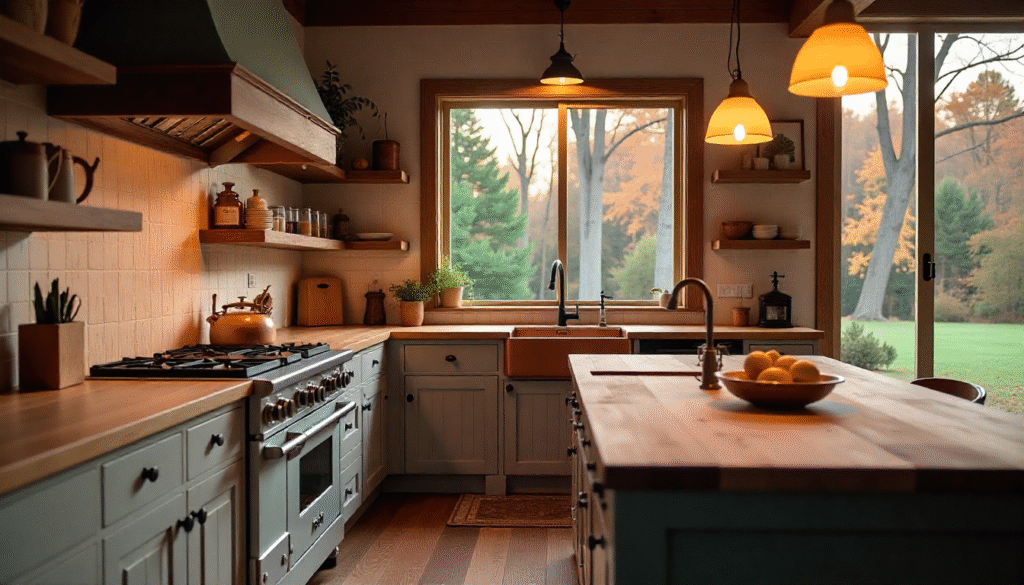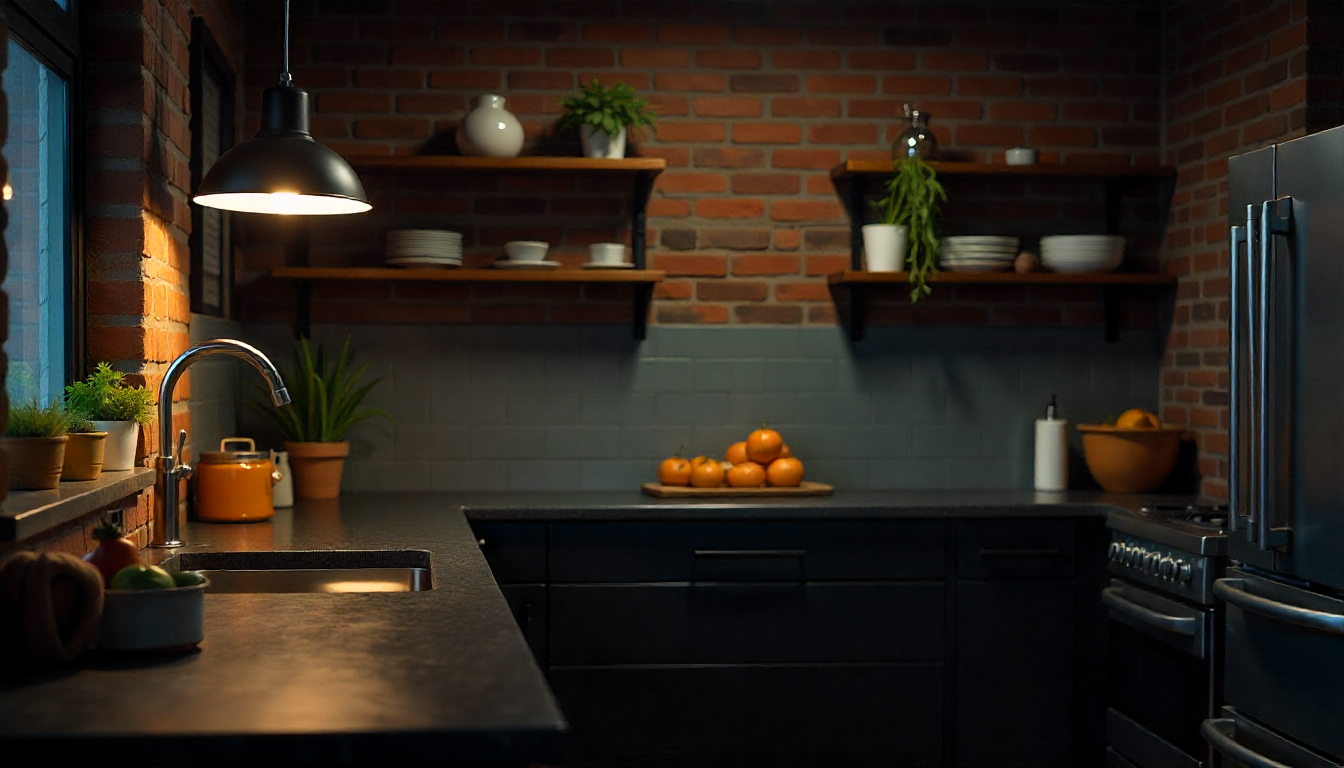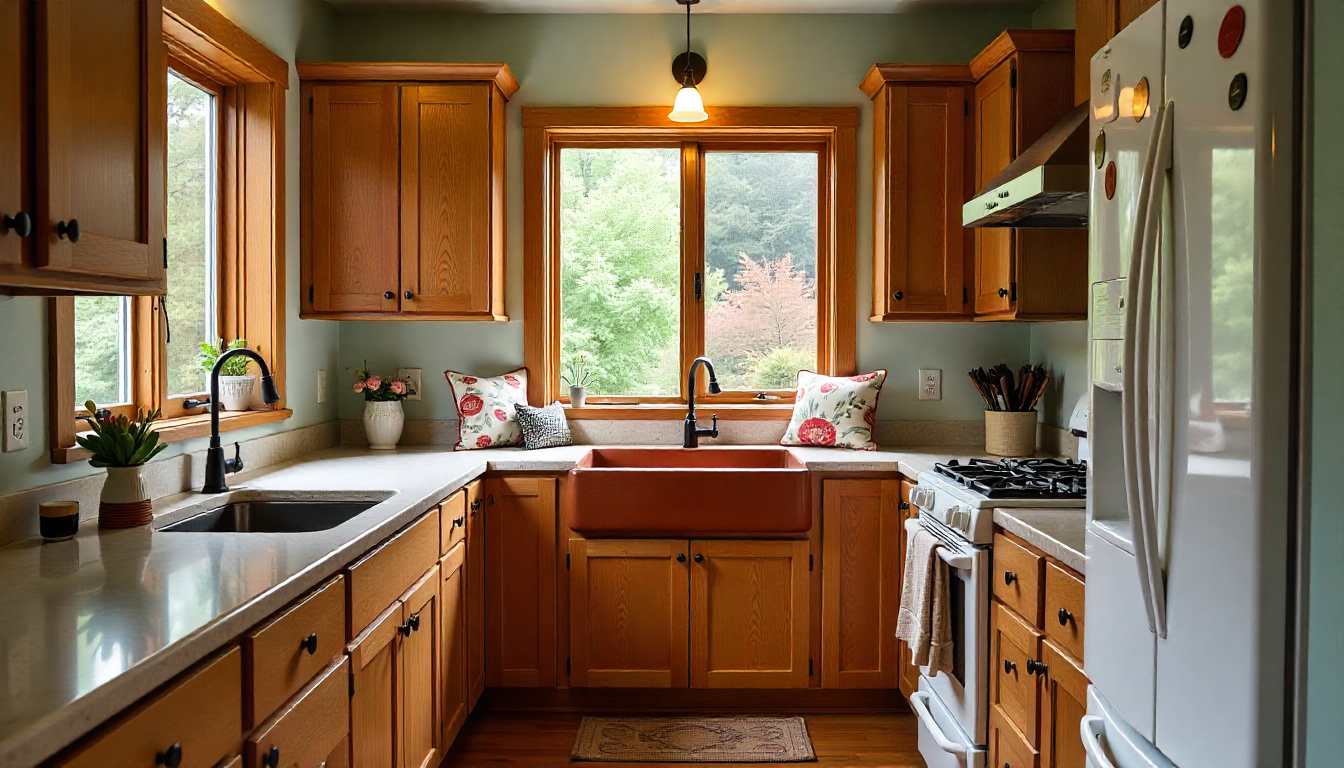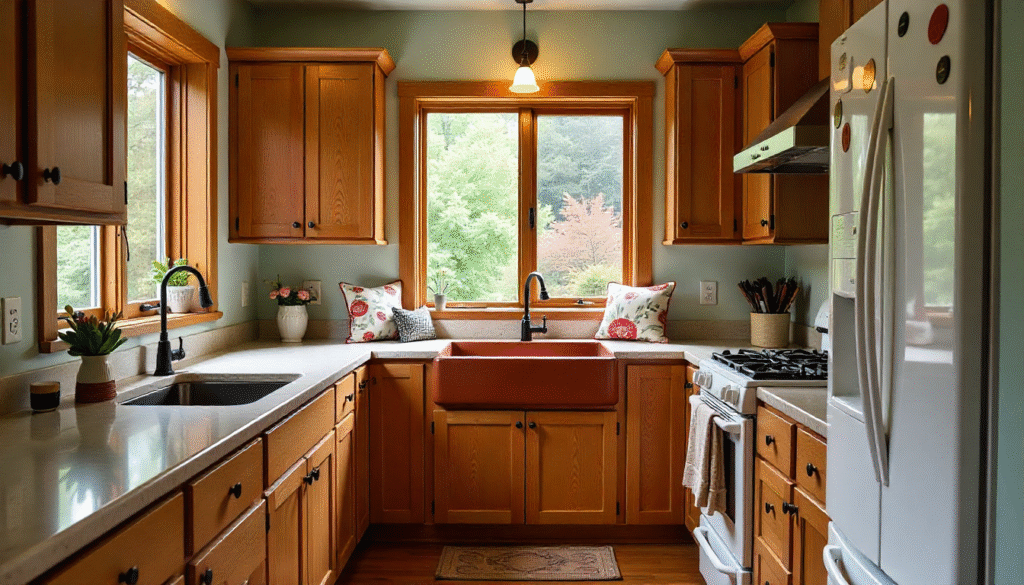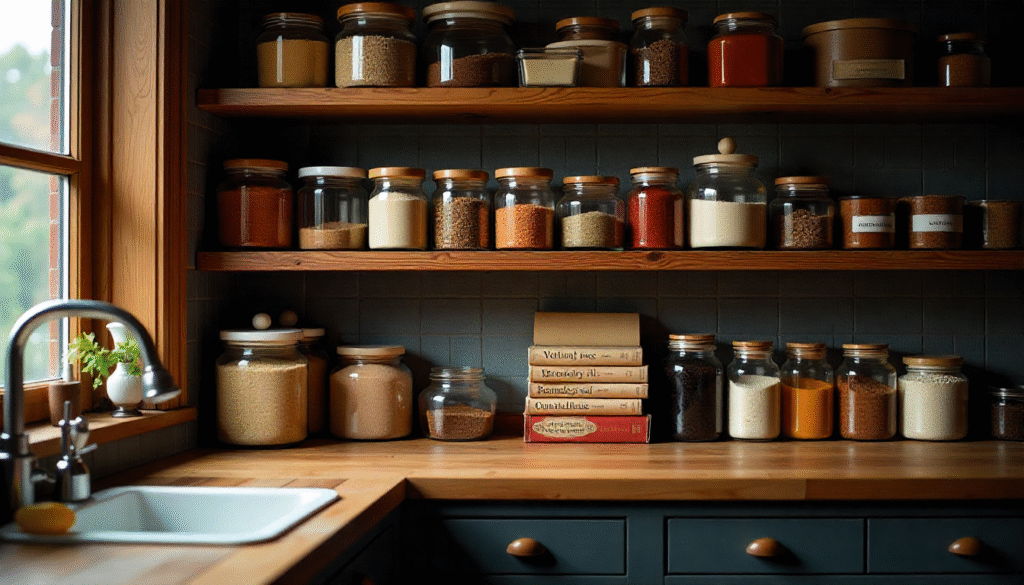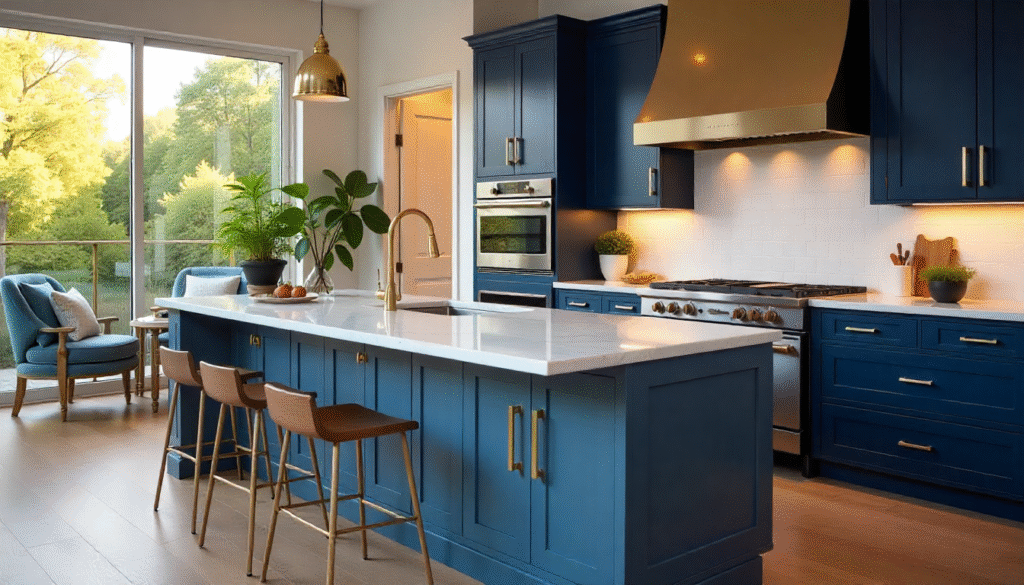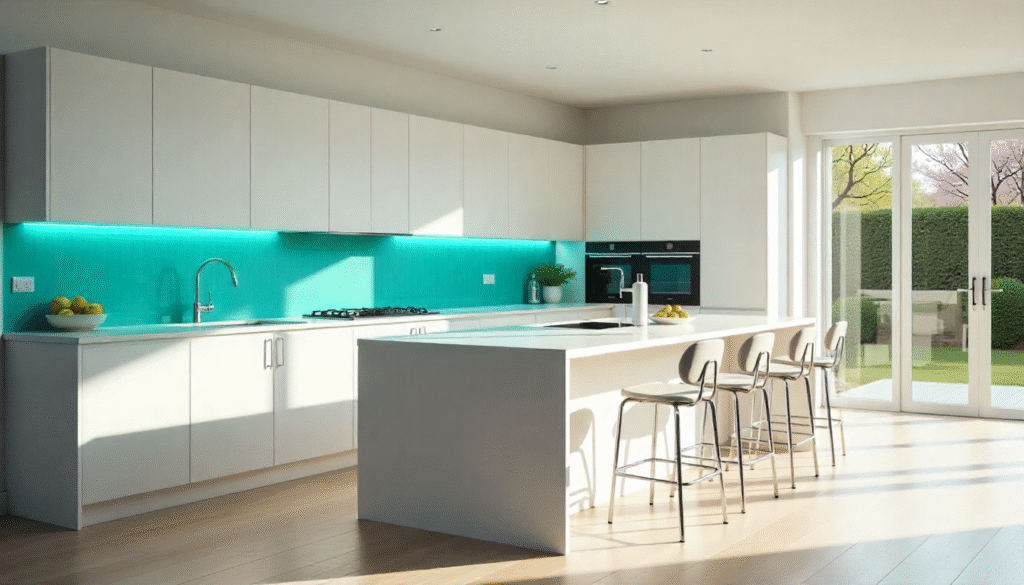The science of the kitchen resides in designing a room that combines flow with utility, where each component is positioned to cut effort and boost efficiency. With intelligent storage systems and ergonomic arrangements, careful design guarantees that cooking turns natural and stress-free. Your kitchen changes by optimising workflow through strategic planning. into a centre of flair and production.
Science Of The Kitchen 1: Zoning for Efficiency
Zoning is one of the most effective concepts in intelligent kitchen design; it divides the room into separate zones depending on utility to Improve process and so reduce extraneous travel. Zoning splits the kitchen into specific areas for cooking, preparation, cleaning, and storage rather than seeing it as one great room.
For instance, a prep area near the sink with simple access to knives, cutting boards, and mixing bowls lowers the back-and-forth movement between stations. Equipped with pots, pans, spices, and utensils, a cooking area close to the stove or oven guarantees everything a chef requires is within arm’s reach. Generally fixed by the sink and dishwasher, the cleaning area functions best when dish storage is close so allowing for a natural flow from dirty to clean.
Meanwhile, the storage section including pantry and refrigerator gains from being set to serve both cooking and preparatory surfaces. Creating these clearly demarcated areas makes the kitchen not only more efficient but also more intuitive, enabling many people to collaborate without running into one other’s efforts or interrupting them. Aside from function, zoning helps to create a more peaceful cooking environment as everything has a logical place and purpose.
Whether you’re preparing a fast daily dinner or organising a dinner party, this principle based in workflow science removes wasted steps, improves ergonomics, and optimises production. Zoning ultimately changes the kitchen into a perfectly choreographed space where design aggressively promotes your cooking, cleaning, and creativity.
Science Of The Kitchen 2: Flow of Movement
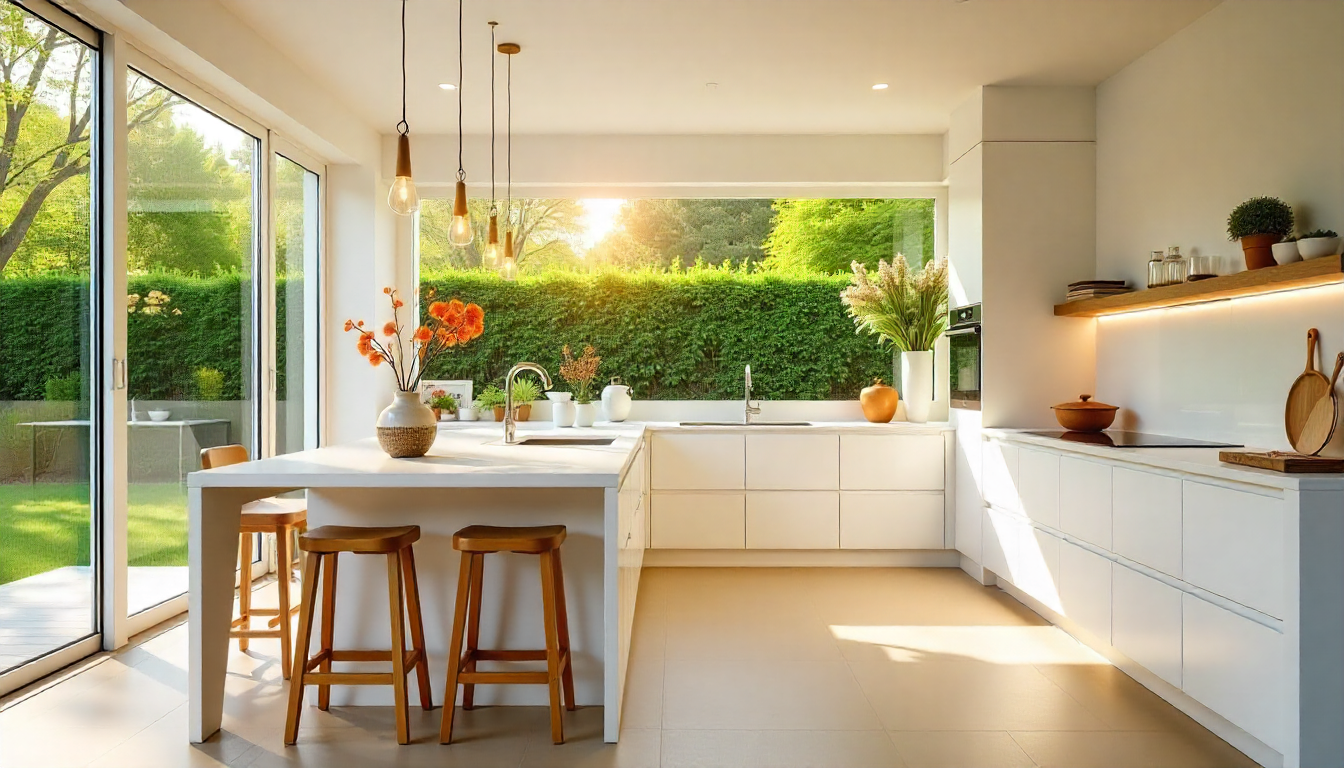
The flow of movement is one of the most important but frequently ignored considerations in kitchen design since it directly influences your ease of operation. Change between two different activities. A good kitchen makes cooking look simple rather than frantic, eliminates bottlenecks, and minimises pointless motions.
The theory first establishes sensible pathways between important workstations such the sink, oven, and refrigerator so you can move without continual retracing. Modern kitchens offer room beyond the conventional work triangle for storage, preparation, cooking, and cleaning, so enabling several activities to coexist simultaneously without tension. Finding the dishwasher close to cupboards, for instance, improves dish unloading speed; putting the prep counter next to the sink quickens washing and chopping.
@ampquartzcabinets Kalau takde idea corner area nak buat macam mana, boleh try pasang pull-out corner rack ni tau! Functionable sangat 🤩 #AmpQuartz #KitchenCabinet #storage #cornerarea #fyp
♬ original sound – AmpQuartz – AmpQuartz
Flow of motion also takes into account circulation space, guaranteeing corridors broad enough for more than one individual to travel easily especially in open-plan kitchens where family members may assemble. Choosing drawers rather than big cupboards is one little change that will lower disruptions by making access to goods simpler. An island in bigger kitchens can serve as a centre piece to guarantee straight aisles but yet keep everything near by.
Finally fusing ergonomics, usability, and psychology, the study of movement in kitchen design removes friction points so that cooking changes from a tiring chore into an Intuitive, pleasurable activity. Design that fits natural human mobility converts a kitchen from just a location for cooking to a centre for creativity, connection, and productivity.
Science Of The Kitchen 3: Ergonomics in the Kitchen
Directly affecting how easily and comfortably you may go around your daily cooking routine, ergonomics is very important in the science of kitchen planning. A well-designed kitchen takes human body mechanics into account to guarantee that countertop, cabinet, and appliance positioning minimises needless effort and wasted energy.
While overhead cupboards have to be within quick reach to avoid overextension. Deep cupboards allow you to retrieve things without stooping or clumsily digging, hence improving accessibility. Choosing drawers, too, improves accessibility. Ergonomics also influence the location of main appliances; for example, placing ovens at waist or chest level gets rid of continuous stooping.
Dishwashers nearby to sinks simplify cleaning and reduce repetitive twisting motions. Even little touches like lazy Susans or pull-out spice racks can greatly streamline operations by putting basics within reach. Good ergonomics also boosts safety by helping to prevent accidents especially while using sharp tools or hot cookware by means of clear paths and sufficient illumination.
Ultimately, ergonomic design turns the kitchen from a place of possible suffering into one of fluid movement, where every reach, lean, and step is meticulously reduced. Homeowners not only save time and energy but also produce a more healthy, more pleasant cooking environment by matching the design with natural human movement. Ergonomics is therefore not just about comfort; it helps you to realise the full potential of the flow of your kitchen.
Science Of The Kitchen 4: Material Choices
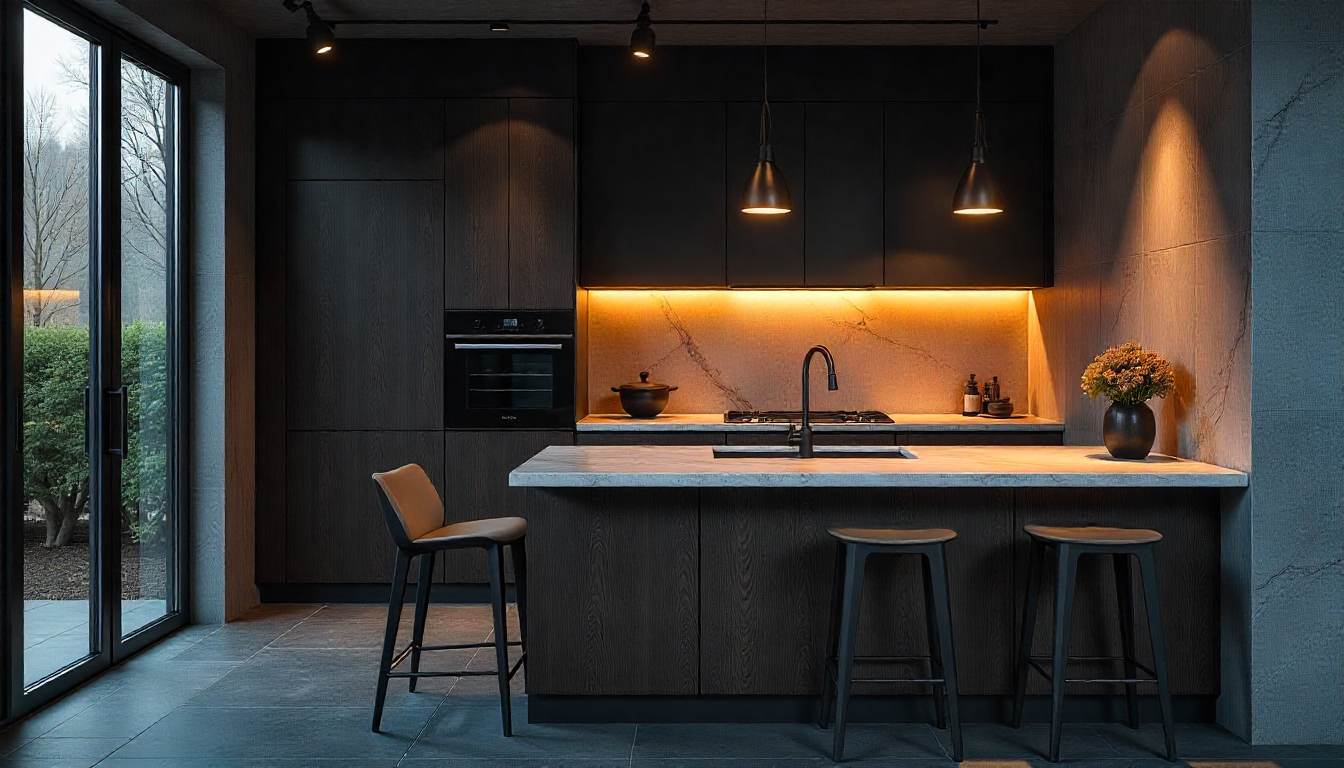
Beyond merely appearance, material choices are critical for designing a kitchen that really maximises productivity. Kitchen science is founded on the creation of a setting fostering speed, cleanliness, and efficiency; the appropriate surfaces can have all the impact.
Countertops, for instance, are not just beautiful accents but also hard workers fit to take chopping, spills, and hot pots. Choosing durable, low-maintenance materials like quartz, granite, or stainless steel assures a flawless workflow since they are resistant to heat, scratches, and stains. Reduce the demand for routine maintenance. Similarly, cabinetry elements influence utility and longevity as well as aesthetics. Aluminium cupboards or moisture-resistant plywood, for example, can handle humid conditions and frequent cleaning ensures.
@ampquartzcabinets Senang ade shelves yang boleh tarik turun macamni, tak perlu dah kena panjat tinggi! Boleh pasang satu kat rumah parents korang 🥳 #AmpQuartz #Pulldownstorage #cabinetmaker #fyp #parents
♬ original sound – AmpQuartz – AmpQuartz
Convenient access to kept items without stretching or bulging. Another important element, flooring has to balance toughness with comfort. Materials like vinyl or porcelain tiles provide slide resistance to maintain your safety throughout hectic cooking sessions as well as simple cleaning and durability. Slight design features like backsplashes influence office productivity. Non-porous surfaces like glazed tiles or glass enable simple cleaning, therefore freeing cooks to focus on duties rather than washing. Smart material choices include cleanliness, when antimicrobial surfaces and easy-to-wipe finishes help to lower cross-contamination risks in food preparation.
Combining tough, practical, and sanitary materials in addition to beautifying the kitchen, throughout it also simplify every stage of cooking, washing, and storage. At last, the materials science converts the kitchen into a high-performance environment where design and function perfectly combine.
Science Of The Kitchen 5: Smart Storage Solutions
Effective kitchen design centres on intelligent storage solutions that transform crammed cabinets and untidy counters into simplified, useful areas that improve workflow. The science is in maximising access and minimising unneeded motions.
Pull-out drawers and corner carousels, for instance, minimise the annoyance of reaching into deep cupboards; vertical dividers for trays and cutting boards guarantee that Every item has its place and can be retrieved within seconds. Designers arrange utensils, pots, and ingredients close their relative zones: spatulas by the stove, mixing bowls next the prep area, cleaning supplies under the sink, Storing tasks organically saves time and work.
Using vertical space wisely with tall pantry systems or ceiling-height cabinets keeps necessities close at hand while less often used goods get stored higher up. avoiding gridlock in top-priority locations. Pull-down shelving, under-counter organisers, and secret chambers not only save square footage but also lessen bending, stretching, or Beyond physical ergonomics, good organising promotes mental efficiency that is, when everything has a specific place, there is less need of steps, which can quickly accumulate during meal preparation. No energy wasted searching or second-guessing.
Modern features like translucent storage bins, labeled compartments, and even tech-enabled inventory systems help smart storage turn the kitchen into a smooth, natural setting. Ultimately, these answers represent the science of design: harmonising space, movement, and utility helps you to live more easily, cook, and clean.
Sign Up For Kitchen Design Ideas
Join over 5,000 homeowners subscribed to our newsletter!

